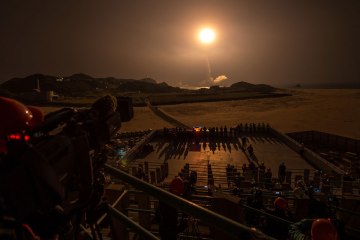The first man on the moon was a character in popular culture decades—even centuries, perhaps—before Neil Armstrong actually filled the role. The assumption was that humanity would reach the moon someday, and it was simply a given that the first historic step would indeed be taken by a man. “This country should commit itself, before this decade is out,” President Kennedy declared in 1961, “to landing a man on the moon and returning him safely to the Earth.” There was no need for the gender-neutral “landing a person on the moon,” no clumsy “and returning him or her safely to the Earth.” Astronauts were supposed to be men and they jolly well would be.
But only until they weren’t. The boys-only rule ended fast, just two years later, when the Soviet Union sent Valentina Tereshkova into orbit for a flight that lasted just minutes shy of three full days. The 50th anniversary of that journey is June 16th, and in the half century since Tereshkova’s flight, 57 other women have strapped in and blasted off, representing nine different countries—most recently China. The U.S. did not join the space sorority until 1983, when Sally Ride flew, but America made up for that dallying, sending a total of 45 women into space since then. They have faced the same challenges as the men, experienced the same thrills as the men and, on occasion, paid the same price as the men. Four women—Christa McAulliffe, Judith Resnik, Laurel Clark, and Kalpana Chawla—died in the Challenger and Columbia disasters.
The U.S. space program is now in a state of drift, with no American vehicle currently capable of carrying human beings to space, and NASA thus dependent on the Russians to ferry our crews up to the International Space Station—at a cost of $70 million per seat. But China—as in so many other things—is a rising power in space and on June 11, sent its second female astronaut, Wang Yaping, into orbit on what is just the country’s fifth crewed mission. She was preceded last year by Liu Yang.
There was less global hoopla when Yang flew than when Ride did, and much less than when Tereshkova did. The fact that human beings travel in space continues to be—and should be—something that delights and even surprises us. The fact that women are among those explorers is, at last, becoming routine.






